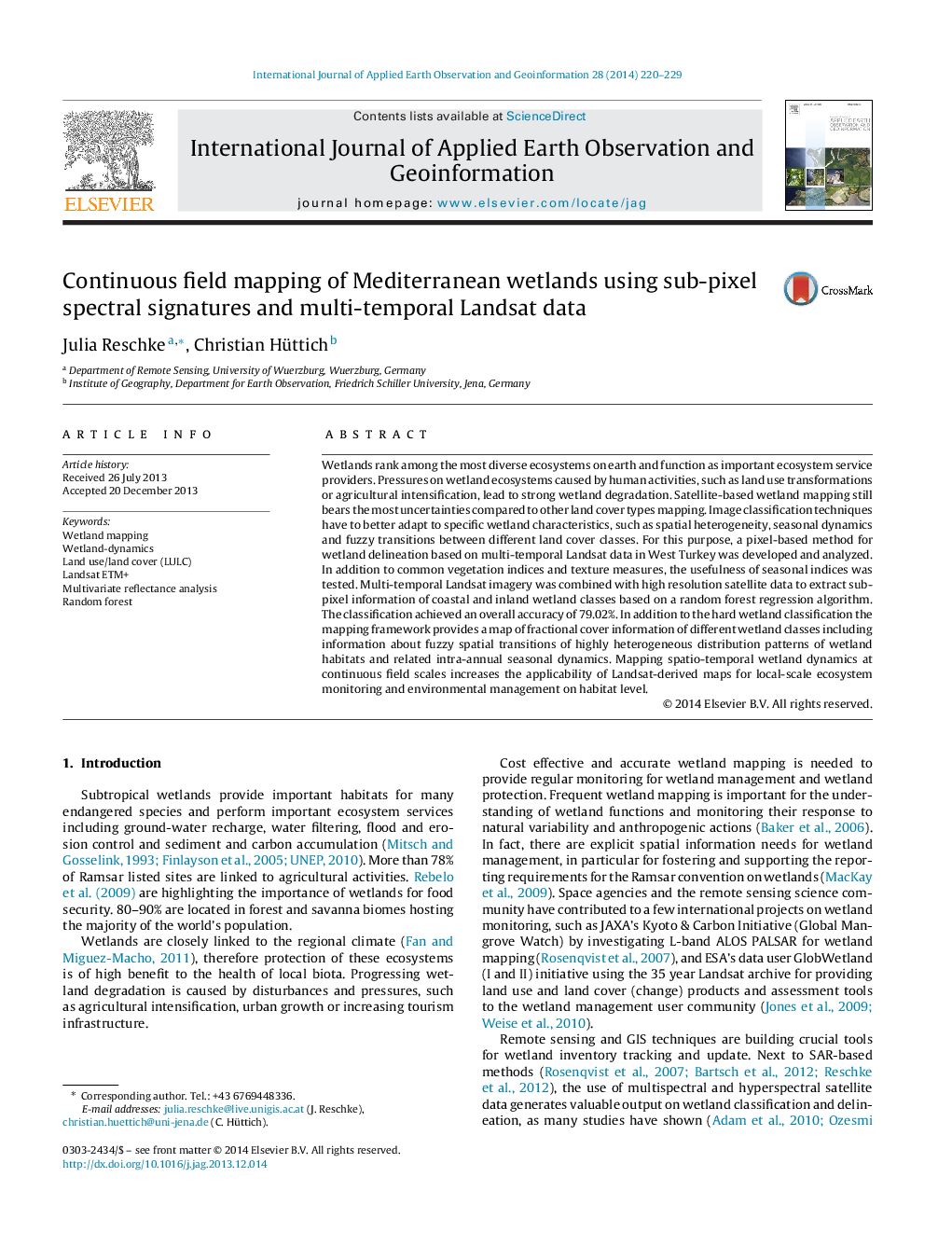| کد مقاله | کد نشریه | سال انتشار | مقاله انگلیسی | نسخه تمام متن |
|---|---|---|---|---|
| 6348990 | 1621831 | 2014 | 10 صفحه PDF | دانلود رایگان |
- Fractional covers of Mediterranean wetland types are mapped.
- Sub-pixel signatures were used for fuzzy habitat mapping at Landsat scale.
- Open source/access tools are used on free Landsat-Archive data to derive fuzzy class boundaries and annual class regime cycles.
- Inter-annual variability is accentuated by the use of seasonal vegetation indices.
- Random forest regression applied on Landsat features achieved a classification accuracy of 79%.
Wetlands rank among the most diverse ecosystems on earth and function as important ecosystem service providers. Pressures on wetland ecosystems caused by human activities, such as land use transformations or agricultural intensification, lead to strong wetland degradation. Satellite-based wetland mapping still bears the most uncertainties compared to other land cover types mapping. Image classification techniques have to better adapt to specific wetland characteristics, such as spatial heterogeneity, seasonal dynamics and fuzzy transitions between different land cover classes. For this purpose, a pixel-based method for wetland delineation based on multi-temporal Landsat data in West Turkey was developed and analyzed. In addition to common vegetation indices and texture measures, the usefulness of seasonal indices was tested. Multi-temporal Landsat imagery was combined with high resolution satellite data to extract sub-pixel information of coastal and inland wetland classes based on a random forest regression algorithm. The classification achieved an overall accuracy of 79.02%. In addition to the hard wetland classification the mapping framework provides a map of fractional cover information of different wetland classes including information about fuzzy spatial transitions of highly heterogeneous distribution patterns of wetland habitats and related intra-annual seasonal dynamics. Mapping spatio-temporal wetland dynamics at continuous field scales increases the applicability of Landsat-derived maps for local-scale ecosystem monitoring and environmental management on habitat level.
Journal: International Journal of Applied Earth Observation and Geoinformation - Volume 28, May 2014, Pages 220-229
